It’s not often an adaptation suits a Director as perfectly as Keep Your Hands Off Eizouken suits Masaki Yuasa. Of course you have works like Gen Urobuchi’s Puella Magi Madoka Magica or Satoshi Kon’s Paranoia Agent. Yet those works were originals, dreamed and created from the ground up by the directors for the anime. Yet here we have someone else’s manga, their work, fitting together perfectly with a renowned industry veteran. Everything from the narrative to the visual aesthetic of the series seem tailor made for him. The highly detailed backgrounds and setting to the rough character designs. The subject material and focus on animation itself to Yuasa’s own life experience in the industry. It’s an aligning of the stars that oh so rarely happens, yet when it does we get something amazing. And that’s what we got this season with Eizouken. Let’s dive in.
(Disclaimer: I am working to make 50 the new “average”. 70 is not an average score people. 70 is above average. Carry on.)
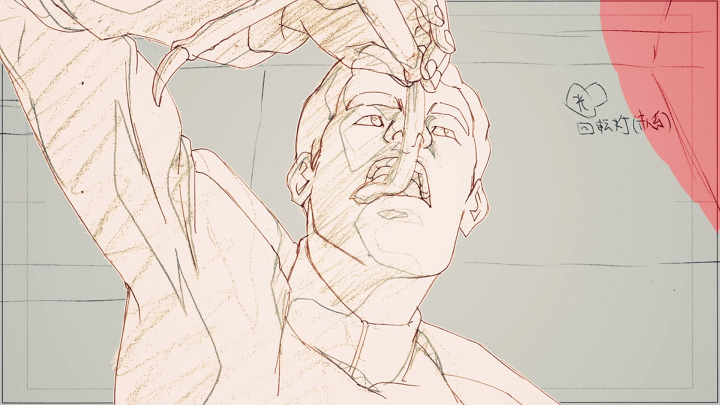
Art/Animation
As always, I want to begin with Eizouken’s art and animation. There is a lot to talk about here, from its variety of styles to how the presentation informs the story. For the sake of clarity, I am going to leave the more meta aspects for later in the review. Focusing entirely on the technical stuff for now. And let me tell you, the technical stuff is pretty damn fantastic. From the rough, seemingly incomplete sequences from Kai Ikarashi, Hakuyu Go and Atsuko Nozaki to the beautiful character work of Shuuto Enomoto and Nick Mckergow. The passion of these animators is infectious to me. And the best part of it all in my mind is how they work in just the right amount of jank. Keeping them professional while still managing to present the cuts as if they were made by our lead characters.
As for the characters themselves, I find their designs and style to be very appealing. Eizouken itself explains this in the story at one point, but their simplicity makes them incredibly expressive. With each of their faces, eyes, noses and mouths being clearly different. Meanwhile there is a clear delineation in their heights and body types. Allowing the viewer to tell who is who at a glance, far before you actually start to take in any details. It’s as if each of the three leads has their own little microcosm of visual stylings. Kanamori consisting of straighter, more rigid lines such as her mouth, while Asakusa is much more rounded like a ball. This isn’t a hard and fast rule throughout its run time, but I feel it helps express each characters personality well before they even speak.
This leads me to the variety of styles that we see throughout Eizouken and the clear lines between them. What I mean is, Eizouken switches art styles on the fly to fit the context of the scene. Both its regular, fully colored and detailed story with simple but expressive character designs to the looser more imaginary ones are very appealing. In particular I always enjoy the storyboarded, as if it was colored with a marker, worlds of the girls imagination. Clearly delineating reality from make-believe while providing a great excuse for these fantastical backdrops. Meanwhile as I said before there is just the right amount of jank and “incompleteness” in these scenes to inform the viewer that the characters are still working through them. It’s a brilliant visual motif, I feel, that I will definitely go into more depth in later on in this review.
All in all, while Eizouken’s production isn’t the most impressive or flashiest thing this season, it is my favorite. The set pieces are grand, yet fitting. The variety in styles is both engaging and interesting as it informs each new scene with each new style. I could go on and on about individual episodes or how Eizouken uses the medium both to inform the viewer technically while showing it off in the moment. However I will save that for the end. As an anime, Eizouken feels wholly unique this season visually. And while no amount of credit is to much for the series original creator Sumito Oowara, Yuasa’s influence cannot be understated either. Where one has created these designs and this world, the other has given them beautiful life, filled with expressive motion. And dear god, do I want more.
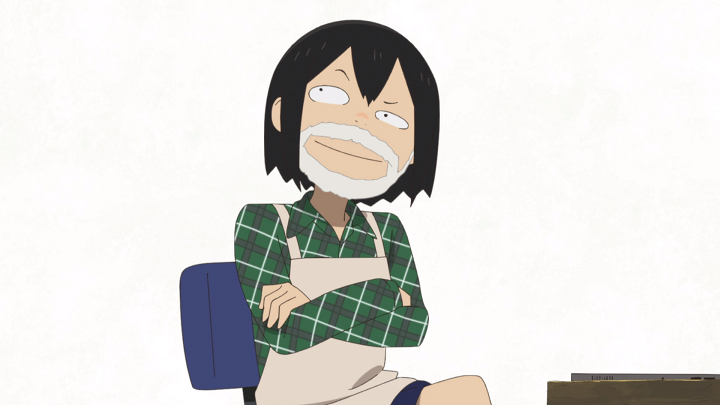
Direction
Next up we come to Eizouken’s direction, which is just as responsible as its animation for its visual quality. From the clever use of CGI environments to the variety of styles and decisions on when to use complete animation, etc. Even simple things like shot composition help Eizouken stand out amongst the chaff. As Yuasa positions shots in recurrening ways, like the close zooms on Asakusa’s face, so we can see her progression as the story goes along. My favorite examples of Yuasa’s directing here is actually the make-believe/imaginary environments and how he uses his resources. Applying CGI backdrops with the marker/watercolor style, where it won’t be out of place, to both save money and make them feel different. Yet he doesn’t just stop there, he actually makes use of the environment for some sweeping camera moves as well. Turning corners and the like. I love it.
That said, it’s actually really difficult to critique Eizouken’s direction because of how solid it is. I don’t have a film degree, i’m an amateur anime critic who writes these in his free time. It’s always going to be easier for an amateur to critique something bad than something good. Something bad is bad in obvious ways. Whether it be over-using dutch angles, breaking the 180 degree rule or just having terrible shot composition. These things stand out. But good direction is often much more difficult, as it accomplishes its job without screaming it to the rooftops. Especially in anime, where a fancy camera move or scene is just as much a product of its animation as it is the direction. So suffice to say, while this section is short, it’s not due to a lack of effort on Eizouken’s part. Simply me not knowing how to talk about it.
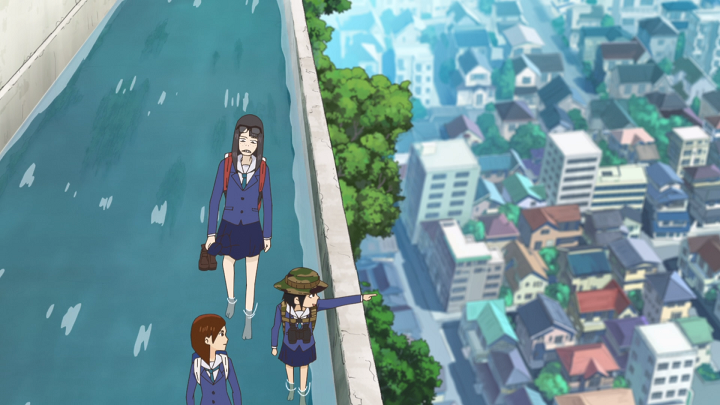
Setting/Story
This leads me to Eizouken’s story, which while simple, I love for that simplicity. The easiest way for me to describe Eizouken is like an anime version of Ed Edd n Eddy. Three friends hanging out in their town with a dysfunctional and exaggerated cast alongside them. While more structured than Ed Edd n Eddy, Eizouken follows this same basic format, where the real drivers are our lead 3 characters as they try to make anime. This might lead you to believe that the individual story arcs aren’t that complex or deep, and you be partly correct. Afterall the true value of these arcs comes from the characters, and we will talk about them later. But I think that ignores a large part of Eizouken’s charm, and that being how it relates to the reality of being an animator. The reality of starting and running a studio.
It’s part of why I think Eizouken meshes so well with Yuasa, who started his own studio in Science SARU. Him and his team are able to pour their passion and experiences into Eizouken’s story. Taking what could only do so much in manga form, and giving it that spark of talking about animation in anime. As throughout Eizouken’s story our leads have to deal with the realities of running a studio. It asks them the question of what do you do when you run out of time, but aren’t happy with the product? Where do you find the passion when you are creating someone else’s creative idea? Eizouken even manages to dip it’s toe into the business side of things, with how much money their work hours are worth. How difficult it is to just break even on projects that take hundreds of hours to complete.
A specific example of this, and perhaps my personal favorite arc, is that of the Robot Club. Not only is this the first time they are making someone else’s creative vision, but they are being paid for it to. They now have a responsibility to their client to get it done, and actual resources to help them do so. And while all of that is great, the real meat of the arc comes from the characters. From Mizusaki’s passion for motion and the Robot Club President’s love of Mecha. Indeed, my favorite scene from the entire series is his run through campus evading security. Ugly crying with joy, like it’s the best day of his life. Combine this with Mizusaki’s relationship with her parents and the number of layers to this arc is astounding. Hitting everything you could want from an arc.
To make a long story short, Eizouken is not a complex narrative. There are no commentaries on society, religion, or any number of socio-economic issues. It isn’t going to preach at you or attempt to explore the depths of depression and mental health. Eizouken is a show about passionate people doing what they love, made by passionate people in that exact same field. Everyone from the animators to the sound designers to the director can no doubt see themselves at some point in Eizouken, and it shows. And its this passion, this love and joy for the medium, that it managed to reach me. For you see, I am not a particularly emotional person. But its hard not to react to the sheer, unfiltered emotion that Eizouken manages to convey in every arc.
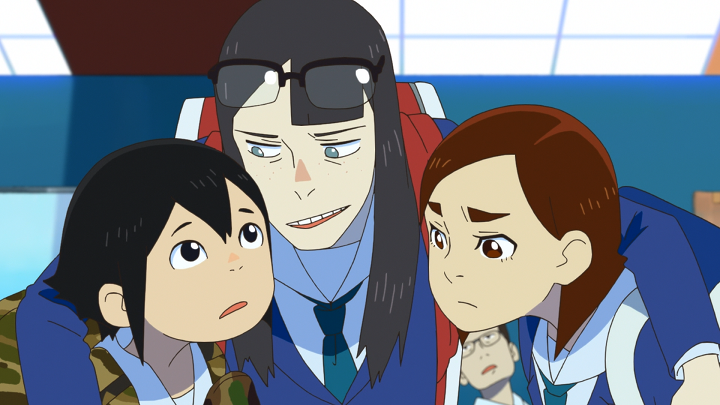
Characters
With all of that out of the way, I can finally get to my favorite part of Eizouken, the characters. There is so much we could talk about here, but I only have so much time. So for the sake of my word count i’ll keep this short. None of Eizouken’s characters are particularly complex like say Ping Pong the Animation, another Yuasa work. But that doesn’t mean they are without value. While each character is relatively simple, together they are greater than the sum of their parts. Cliche, but stick with me here. Right off the bat each of our main 3 characters represent a different aspect of the animation pipeline. From Kanamori handling the business side to Mizusaki the animator side to Asakusa, in the directors chair. Together, they form the best leading trio I have seen in anime in awhile, and they aren’t without value individually either.
Even beyond their representations of their roles in the industry though, each of the three stand out. Kanamori for instance opens the series as a rather upfront and cold individual. Focusing on making money through every scheme or project they work on. As Eizouken progresses however and we learn more about her, she doesn’t change, but our perspective of her does. We learn she focuses on money, because it’s what keeps the lights on in their club. We learn how hard she works, just like the other two, to make sure their projects are a success. From organizing deals with other clubs, to collaborations, to protecting them from the student council and teachers. Kanamori cares for these productions and her friends in her own way. Only laying down the law when there is no other choice, if it ensures the production’s completion.
Similarly Mizusaki could easily be seen as a sort of rich privileged child at the start. She has a successful modeling career and all this could easily have just been a hobby. But as Eizouken progresses, we see the lengths she is willing to go to. The work she is willing to put in. Eizouken shows us her love of motion from a young age, and how it as influenced her day to day life. One of the best sequences in the entire season was Mizusaki’s backstory with her grandmother, which I won’t spoil here. Suffice to say, each of these characters have layers, and they are present from the beginning. Waiting to be revealed when the time is right, all the while building on the character analogy that is the animation industry.
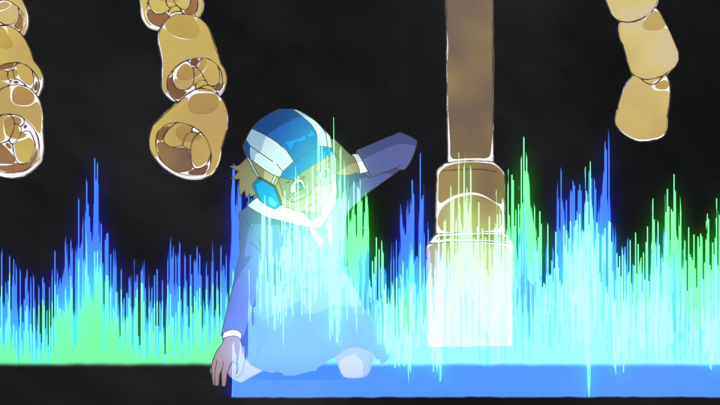
OST/Sound Design
Next up comes the OST and Sound Design. Sadly, most of Eizouken’s OST is not publicly available at this time. So while I will reference some specific tracks here or there, your best bet is to just watch the show for them. That said, there are two tracks I want to draw your attention two. Ones which I will be calling “Inspiration” and “Montage” because of how they are used in the series. In case it wasn’t obvious, “Inspiration” is just that, it’s the audio equivalent to a light-bulb going off, to figuring something out. It’s bright and airy, like you are soaring through the sky, head above the clouds. Energetic and free, “Inspiration” plays primarily during the imagination segments as the trio is experimenting with their ideas. It’s sound is completely unique to anything I have ever heard before, which fits Eizouken to a tee.
The other track, which I dubbed “Montage”, is much the same. It sounds almost random, as if it was made just bit hitting a wood stick on things found laying around. The xylophone and… perhaps a kazoo (?), fits these playful kids perfectly. Meanwhile unlike “Inspiration” it stays rather constant throughout, dragging you into its rhythm and then keeping you there. Making it feel like no time has passed at all once its over. As the name I gave it suggests, it is used primarily during montage scenes in Eizouken. So while this is only a small sample of Eizouken’s OST, I think they are emblematic of the series as a whole. Bright and hopeful, energetic even in it’s downtime, Eizouken sounds like a show that just makes you happy. I know that was my experience with it.
Meanwhile the sound design of Eizouken was one of the most endearing things I have listened to in awhile. And not because of general sound design of Eizouken, that is all well and good. It does what it needs to and works. No, the part that I love are the sounds made by the VA’s. We see it throughout the season, mostly during the imagination sequences, where everything is made of our leads. From backgrounds to designs, its ostensibly all made by them… so why not the sounds too? From the pat pat pat of propeller blades to the ch ch ch of a train on the tracks. Even the whoosh of wind rushing through the air, is done by the leads VA’s. It’s incredibly charming, fits the scenes perfectly, and lends itself well to Eizouken’s “homemade” aesthetic. I couldn’t help but smile every time I heard it.
So long story short, Eizouken’s OST and Sound Design are both incredibly unique and upbeat. They fit the narrative to a tee, and just like every other part of the project, they bleed passion. There was not a single episode where I didn’t smile or laugh at the VA’s sounds. Where I didn’t bob my head along with the music or find myself hyped up. One could argue that that balancing on some scenes was a bit loud, or that they reused the same track a few to many times. These are both valid criticisms, and were I doing this for an award of some kind, I might make them. But as far as personal enjoyment and quality of time spent? I have no complaints. I can’t wait for the OST to be released so I can listen to it in full.
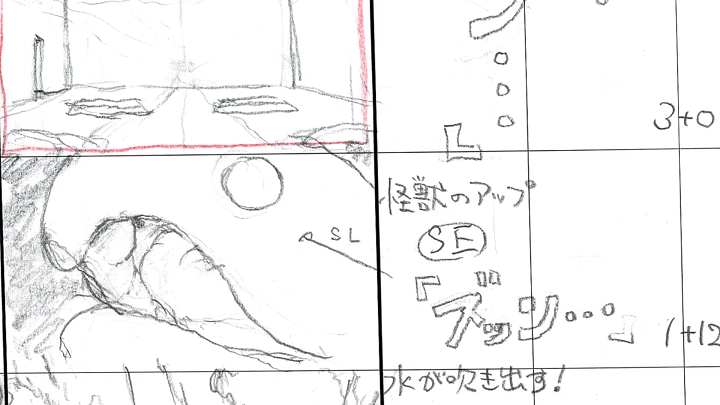
Meta Aspects
Finally, we come to the part of the review where I put everything I didn’t know where else to put. Everything from Eizouken’s direction and animation to its story and characters have something in here. To start with, there is so much more to Eizouken’s direction and animation than it simply looking good. Than simply conveying its message. As a series focused on the actual animation process, similar to Shirobako in a lot of ways, it’s not surprising we get some interesting uses of the medium. But a lot of my favorite bits are actually rather meta in nature. We have scenes where Asakusa is describing different ways to animation faces. The pros and cons of simplicity in design. All the while her own face is making use of the exact same things she is talking about. Showing the audience visually, rather than only telling them.
We see this throughout Eizouken, though primarily in the beginning, as we begin to learn about animation as a process. One of my favorite sequences for example is the development of the windmill. Where Asakusa and Mizusaki design and animate a broken windmill near their club. Iterating and building on it, changing the design and showing how the animation changes with it. How reality influences it, almost like we are watching an actual animators thought process at work. Only to, at the end, explode into this giant imaginary sequence as they destroy a building to open it up to the wind. Or how when describing sound design and such, Eizouken visually shows the sound waves, with characters moving and cutting them fully animated. It’s a very different approach to animation compared to Shirobako, which focused primarily on the business side of things.
All of this is to say that, even if Eizouken wasn’t a good show, and it is, I would tell you to watch it. If you have any interest in animation as a medium, as something more than just good fun shows to watch. Because while it is presented in a fun and lackadaisical form, Eizouken is truly the story of young animators. Their passion, their struggle, the compromises they have to make along the way to achieve their vision. I could go on and on about the various scenes where Eizouken uses the medium to its full effect. Where it demonstrates the very techniques visually the characters are talking about narratively. So while yes, it’s idealized and unlike Shirobako it makes no attempt to stay confined to reality, I think for animation enthusiasts both Shirobako and Eizouken are worth the watch.
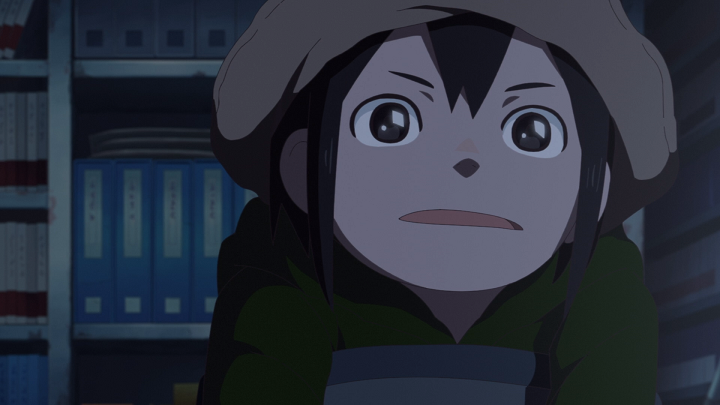
Conclusion
So all in all, what do I think of Keep Your Hands Off Eizouken? I bloody love it. The only reason it isn’t in my top 10 is because Yuasa already has 2 others there with Tatami Galaxy and my #1 of all time, Ping Pong the Animation. The fact that I am even considering Eizouken in the same space as those two says a lot about my opinion of it. Like every Yuasa show, Eizouken is unique. Visually and narratively there is nothing like it airing this season, and possibly even this year. Part of me hopes that it gets a sequel, that Science Saru can continue this story. But another part just wants to freeze Eizouken in time so it can never be hurt or changed. Regardless of what happens in the future though, I know one thing: I am so buying the BD’s when they release.
Thanks for reading.

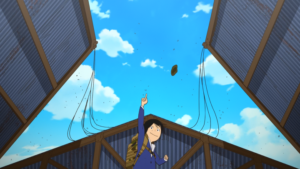
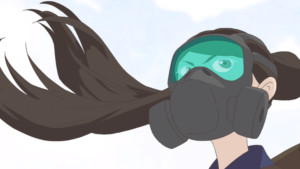
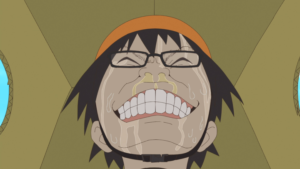
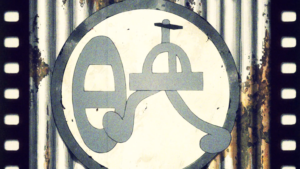
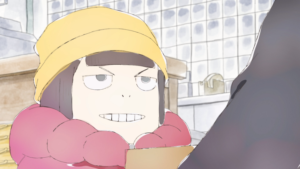
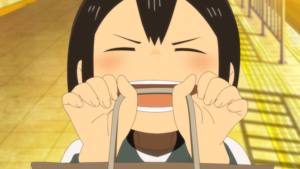
Since you mentioned one of your favorite anime on here, are you and the other writers gonna write up your own top 10/20 favorite anime here sometime, like Psgels did? I am curious of your guys’ taste in anime.
Hmm, we could yeah. I think it may be worth a shot to do somethin like that. I’ll bring it up with them.
That said my top 10 in order are:
1) Ping Pong the Animation
2) Tatami Galaxy
3) Showa Genroku Rakugo Shinju
4) Fullmetal Alchemist: Brotherhood
5) Mushi-shi
6) Steins;Gate
7) Cowboy Bebop
8) Run With the Wind
9) Great Teacher Onizuka
10) Tokyo Godfathers.
With honorable mentions to works like Eizouken here, Monsters, Moribito, Nagi no Asukara, Mob Psycho 100 S1 and Vinland.
I’m so sorry to do this Lenlo…but : ” i’ll keep this short” <—-Caps not on I'll
and "direction and animation than it simply looking food" <—-You meant good yes?.
Sorry to bring that up, I hope it doesn't come off as rude, when I see an article, before I even read it, I see the spelling and editing stuff first =<
As for the series itself, my summary of my opinion on it is that I feel it alleviates any doubt regarding Yuasa's ability to successfully work on more mainstreamed products, yet at the same time I do feel that the show comes off comparatively less than his other stuff because of that same mainstream-ization.
The REAL reason I was into it was more for his magical realism in the show, BECAUSE in the past he was always less a story guy and more a VISUALS guy.
Its not like I dislike the other aspects of it, rather I have this IMAGE of Yuasa.
As for my favourite anime list:
1. Serial experiments Lain
2. Perfect blue
3. Angel's egg
4.Space adventure cobra (film)
5. Ghost in the shell (all of it except arise)
6. Princess tutu
7. Sangatsu no lion
8. Texhnolyze
9. monster
10. Shiki
Favourite manga:
1. Gunslinger girl
2. Earl Cain saga
3. Fruits basket
4. Angel sanctuary
5. Kare Kano
6. Horou musuko
7. Chrono crusade
8. Freesia
9. Eden its an endless world
10. Basara
I want to honorably mention flipflappers, original timeline gundam, all of Macross and Moribito aswell, along with Hellsing .
Haha, don’t worry about it dude. I try my best to proofread but occasionally things slip through. So thanks for pointin them out! I went ahead and fixed them
For anyone who’s interested, my top 30 favorite anime are…
1. Shounen Onmyouji
2. Fancy Lala
3. Dog of Flanders (Two TV series + movie)
4. Tokyo Magnitude 8.0
5. Natsume Yuujinchou (All seasons)
6. Ringing Bell
7. Rose of Versailles
8. Haibane Renmei
9. Les Miserables: Shoujo Cosette
10. The Girl From The Other Side: Siuil, a Run OVA
11. Snow White With The Red Hair
12. A Little Princess Sara
13. Popolocrois Monogatari
14. After War Gundam X
15. Yona of the Dawn
16. AnoHana
17. Ie Naki Ko Remi (Both 1977 and 1997 anime)
18. Digimon Tamers
19. Ikoku Meiro no Croisee
20. Seirei no Moribito
21. Heartcatch Precure
22. Bunny Drop
23. Anne of Green Gables/Before Green Gables
24. Vision of Escaflowne
25. Figure 17
26. Emily of New Moon
27. Perrine Monogatari
28. Jewelpet Twinkle
29. Whisper of the Heart
30. Tanoshii Moomin Ikka